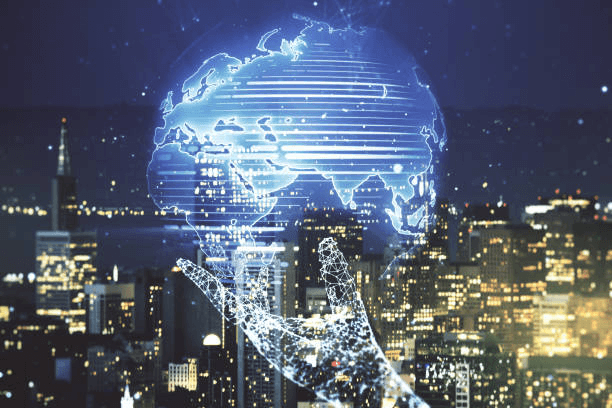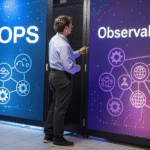Next-Gen AI: Transforming 3D or Interactive Content


Introduction
Next-Gen AI: Transforming 3D Technology is evolving faster than ever, and AI is leading the way. AI-powered tools are transforming the way we create 3D graphics, personalized media, and interactive content. In the past, designing 3D models, animations, and digital experiences required a lot of time, effort, and skill. Now, AI simplifies these processes, making content creation more accessible to everyone.
Whether you are a designer, developer, or business owner, Next-Gen AI Transforming 3D can help you create stunning visuals and engaging content more efficiently. It automates time-consuming tasks, reduces costs, and allows creators to focus on their ideas instead of technical details. From gaming and movies to marketing and virtual reality, AI is being used to generate high-quality content quickly and easily.
In this guide, we will explore how AI is changing the digital landscape. We will discuss its benefits, popular tools, and the latest trends in AI-driven content creation. Additionally, we will cover the challenges and risks associated with AI, helping you understand both its potential and limitations. By the end of this guide, you will have a clear understanding of how AI can enhance your content creation process and how you can start using it today.
What is Next-Gen AI for 3D and Personalized Media?

Next-Gen AI Transforming 3D and personalized media is an advanced technology that uses machine learning, automation, and deep learning to create stunning visuals, interactive experiences, and custom content. AI takes complex tasks that once required hours of manual work and completes them in minutes. It can generate high-quality 3D models, personalize media for different audiences, and enhance interactive content like virtual reality (VR) and augmented reality (AR).
With AI, designers and creators don’t have to start from scratch. AI-powered tools can analyze existing data, predict patterns, and generate detailed 3D designs with lifelike textures, lighting, and animations. This makes it easier to create realistic characters, immersive game environments, and professional-grade media content.
AI also plays a big role in personalized media. It studies user preferences, behaviors, and interactions to deliver customized experiences. Streaming services, online advertisements, and gaming platforms use AI to recommend content tailored to individual users. This helps brands engage their audiences more effectively and improves the overall user experience.
Businesses, filmmakers, and marketers use AI-driven tools to enhance storytelling, create lifelike animations, and develop visually appealing advertisements. Even small businesses and independent creators can now produce professional-quality content without needing expensive software or technical expertise.
Next-Gen AI: Transforming 3D is not just for professionals. With user-friendly tools available, anyone can experiment with 3D modeling, animation, and content personalization. Whether you are designing a virtual world, developing an interactive app, or producing an engaging marketing campaign, AI makes the process faster, easier, and more accessible.
Why Next-Gen AI Transforming 3D Is Interactive Content

AI is transforming 3D design and interactive media by making them more efficient, creative, and accessible. Traditionally, creating 3D models and interactive environments required skilled professionals and powerful computers. Now, AI-powered tools can speed up the process, automate repetitive tasks, and enhance creativity.
1. Faster Content Creation
AI drastically reduces the time needed to create 3D models, animations, and interactive experiences. It automates complex steps like texture mapping, lighting adjustments, and character animations. This allows designers and developers to focus on storytelling and creativity rather than technical challenges.
2. Cost Efficiency
Creating high-quality 3D content used to be expensive, requiring large teams and expensive software. AI lowers costs by automating many tasks, reducing the need for extensive manual work. Small businesses and independent creators can now produce professional content without hiring a full production team.
3. Realistic Visuals and Animations
AI-powered tools can generate lifelike textures, realistic physics, and smooth animations. Features like AI-driven motion capture help create natural human movements in games, movies, and virtual simulations. This makes digital content more immersive and engaging.
4. Personalized Experiences
AI enhances interactivity by adapting content to users. It analyzes user behavior and preferences to create personalized experiences. For example, gaming AI adjusts difficulty levels based on a player’s skill while streaming platforms recommend videos based on viewing history.
5. Increased Accessibility
AI-powered tools simplify 3D modeling and content creation, allowing more people to participate in the industry. Beginners can use AI-generated templates, automatic editing tools, and drag-and-drop features to create stunning visuals without advanced skills.
6. Improved Collaboration
AI allows teams to work together more efficiently by automating workflow processes. Cloud-based AI tools enable remote teams to collaborate on 3D projects in real time, reducing delays and improving productivity.
7. Scalable Production
AI helps studios and businesses produce content at scale. Whether creating 3D assets for a video game, an animated movie, or a product catalog, AI ensures consistent quality while increasing speed and efficiency.
8. AI-Generated Virtual Worlds
AI is being used to design entire virtual environments. In gaming, AI-powered engines generate landscapes, characters, and objects dynamically, making games more immersive. In virtual reality (VR) and augmented reality (AR), AI helps build realistic simulations for training, education, and entertainment.
9. Automation of Repetitive Tasks
AI takes care of repetitive tasks like rigging 3D models, applying textures, and optimizing files for rendering. This allows artists to spend more time on creativity and design instead of technical adjustments.
10. AI in Film and Media Production
Hollywood and advertising industries are using AI to generate special effects, create digital doubles, and automate editing processes. AI-powered tools help filmmakers produce high-quality visuals faster and with fewer resources.
Benefits of Next-Gen AI Transforming 3D Interactive Content
AI offers many advantages for creating 3D visuals and interactive experiences. It improves efficiency, enhances creativity, and makes content more engaging. Here are the key benefits:

1. Faster Content Creation
AI speeds up 3D modeling, animation, and video editing. Tasks that once took hours or days can now be done in minutes. This allows designers and creators to produce more content in less time.
2. Cost Reduction
AI lowers production costs by reducing manual work. Businesses no longer need large teams of designers and animators, as AI automates many of these tasks. Even small creators can now afford high-quality 3D content.
3. Higher Quality and Realism
AI enhances visuals by improving lighting, textures, and animations. It can generate realistic human expressions, lifelike environments, and high-quality special effects, making content more immersive and professional.
4. Personalized and Adaptive Content
AI can analyze user data and create personalized experiences. In gaming, it adjusts difficulty levels based on player behavior. In marketing, it tailors advertisements to individual users. This increases engagement and user satisfaction.
5. Automation of Repetitive Tasks
AI handles time-consuming tasks like rigging characters, adding textures, and adjusting animations. This allows designers to focus on creativity rather than technical details.
6. Improved Collaboration
AI-powered tools allow multiple users to work on the same project remotely. Cloud-based platforms enable teams to share, edit, and review 3D models in real time, making collaboration easier.
7. Scalability for Large Projects
For businesses producing a large volume of content, AI helps maintain quality while increasing speed. AI can generate thousands of 3D assets quickly, making it ideal for games, virtual worlds, and large-scale marketing campaigns.
8. Real-Time Rendering and Simulation
AI speeds up rendering, allowing creators to see changes instantly. This is especially useful in gaming, architecture, and virtual reality, where real-time feedback is essential.
9. Enhanced Creativity
By handling technical work, AI gives creators more freedom to experiment with new ideas. It can generate unique designs, suggest improvements, and inspire new creative directions.
10. Better User Engagement
AI-powered interactive content, such as AI-driven chatbots, virtual influencers, and adaptive storytelling, keeps users engaged for longer. This is useful for games, digital marketing, and virtual experiences.
Pros and Cons of Next-Gen AI Transforming 3D and Interactive Content
Pros:
✔ Faster Production – AI automates tasks, saving time.
✔ Cost-Effective – Reduces the need for large teams and expensive software.
✔ High-Quality Visuals – AI improves realism and detail in 3D models and animations.
✔ Personalization – AI tailors content to individual users, increasing engagement.
✔ Automation- reduces repetitive tasks, allowing creators to focus on innovation.
✔ Better Collaboration – Cloud-based AI tools allow remote teams to work together easily.
✔ Scalability – AI helps businesses produce large-scale content quickly and efficiently.
✔ Real-Time Editing – AI speeds up rendering and simulations, improving workflow.
✔ Creativity Enhancement – AI-generated ideas inspire new designs and concepts.
✔ More Accessibility – User-friendly AI tools make 3D creation easier for beginners.
Cons:
❌ High Initial Investment – Some AI tools require expensive subscriptions or training.
❌ Loss of Human Touch – AI-generated content may lack creativity and emotion.
❌ Data Privacy Risks – AI needs large datasets, which may raise security concerns.
❌ Dependence on Technology – Over-reliance on AI may reduce human skills in design.
❌ Job Displacement – Automation may reduce the demand for traditional design roles.
❌ Inconsistent Results – AI-generated content may sometimes need manual adjustments. ❌ Limited Customization – AI tools may not always match unique creative visions.
Extended Conclusion
Next-Gen AI Transforming 3D and interactive content creation, making it faster, more affordable, and accessible to everyone. Whether you’re a seasoned professional or a beginner, AI-powered tools are helping you achieve high-quality results in record time. From automating repetitive tasks like modeling and rendering to offering personalized experiences for users, AI is driving efficiency and creativity in ways we could have only imagined a few years ago.
By removing the complexity of 3D content creation, AI allows creators to focus on what truly matters—innovation. Imagine producing intricate 3D models, animations, or VR environments without needing to spend countless hours on technical tasks. AI handles the heavy lifting, giving you more time to explore new ideas and enhance user experiences.
While there are challenges, such as the high initial costs of some tools and concerns about job displacement, the advantages far outweigh the cons. Businesses and individuals who embrace AI-driven content creation are well-positioned to stay competitive in an ever-changing digital landscape. Whether it’s personalizing content for your audience, reducing production costs, or simply speeding up your workflow, AI offers tremendous value to content creators across industries.
In summary, AI is not just a tool; it’s a game-changer. It empowers creators to break barriers, explore new creative horizons, and produce content that engages and delights audiences. The future of next-Gen AI Transforming 3D media is bright with AI, and now is the perfect time to dive into this exciting technology.
Frequently Asked Questions (FAQ):
How does AI improve 3D content creation?
Answer : AI automates tasks like modeling, texturing, and rendering, making 3D content creation faster and more efficient.
Can AI replace human designers?
Answer : No, AI assists designers by handling repetitive tasks, but human creativity and expertise are still essential.
Is AI-generated 3D content high quality?
Answer : Yes, AI can create highly realistic visuals, but manual adjustments may be needed for perfect results.
What industries benefit from AI in 3D content?
Answer : Gaming, film, architecture, marketing, and e-commerce all use AI for faster and better content creation.
Is AI-based 3D modeling expensive?
Answer : Some AI tools require investment, but they often reduce long-term costs by increasing efficiency.
Can AI personalize media for different users?
Answer : Yes, AI studies user behavior to create personalized content experiences, improving engagement.
Are there risks in using AI for content creation?
Answer : Yes, risks include data privacy concerns, potential job losses, and the need for human oversight to ensure quality.



